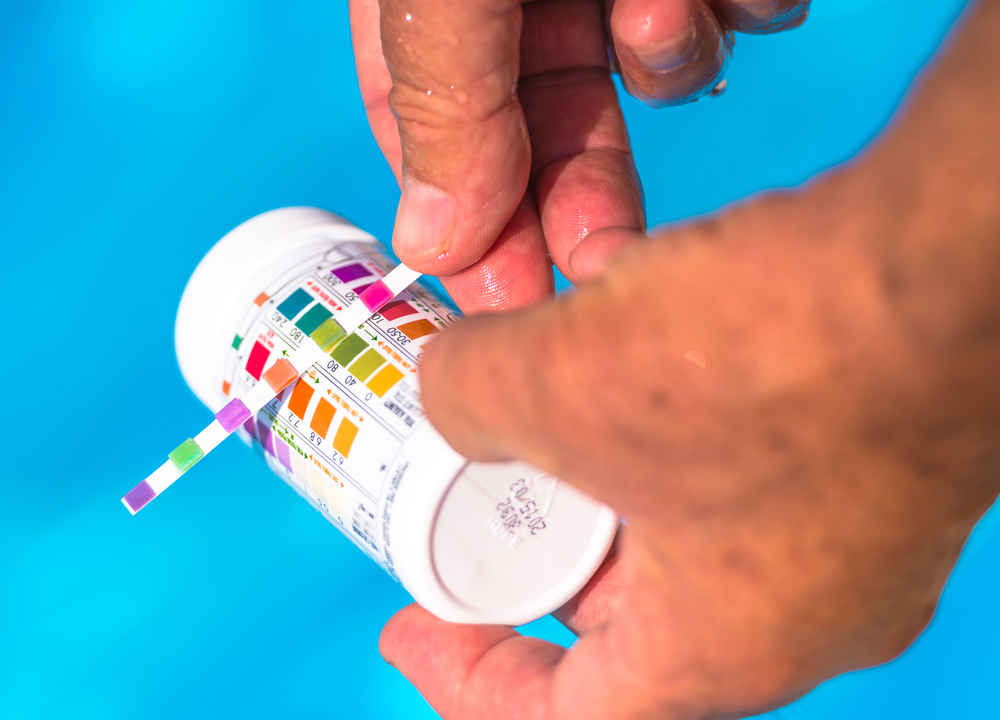Keeping your pool crystal clear and swim ready is not as difficult a task as you may imagine, but keep this mind, once you have obtained crystal clear water, you have to maintain it. By following only a few simple rules, you can stop algae and other contaminants in their tracks!
Clean Your Pool
What should you do if your pool is invaded by pine needles, leaves, pollen or dirt? Your first option is an automatic pool cleaner. Some pool owners use their kids or their back to remove the debris while others turn to an automatic cleaners to get their pool clean.
Trust us when we say that an automatic pool cleaner can be a pool owners’ best friend. Cleaners come in two types: pressure side and suction side.
Pressure side cleaners usually have an opening of about 2.5 inches in diameter, which makes these automatic cleaners perfect for locations with lots of trees, pine needles and leaves. Using water pressure, these cleaners roll across the pool surface, picking up debris and force it into an attached bag. Some cleaners you may have seen have a tail that moves back and forth that stirs up small particles for the pool’s skimmer and / or a main drain to filter out.
Suction side cleaners connect to the skimmer or to a dedicated suction line. These cleaners use the suction of the filtration system to transfer sand, dirt and other debris into the pool’s skimmer. Some automatic cleaners include their own filter bags so leaves or other large items do not clog the skimmer.
Filter Your Pool Water
A pool filter plays a key role in keeping water circulating and prevent the growth of living organismis like algae. There are three types of pool filters – sand, DE (diatomaceous earth), and cartridge. Sand and DE filters require backwashing, while cartridge filter systems do not need backwashing—just the occasional spray from a hose. Sand and DE filters do require some disassembly to replace filter media or to clean the DE grids.
Test Your Pool Water
Once your pool is debris free, the water needs to be cleansed of impurities. The only way to know if the water is balanced is to test it on a regular basis. This is where testing systems come in with options such as test strips, digital test strips and wet chemistry kits.
Test strips are simple – just dip and compare the colors on a chart. Dip the strip for a specified number of seconds into the pool and then compare the colors given by the manufacture. A digital test strip reader goes a a bit further by displaying on a screen the water’s level of sanitizer (chlorine), pH and total alkalinity. For a more comprehesive test, you may want to look into a wet chemistry kit. By sampling the water and then adding chemical re-agents, you will see what you chemicals you need to add by the color change in the water sample. You can then compare, determine the correct levels and then choose a course of action of what chemicals you need to add.
Sanitize Your Pool
There are numerous products that keep water sanitized. Chlorine products are the most common because they are both effective and cost efficent. Chlorine also acts as an oxidizer or shock, meaning it eradicates organic material such as sweat, sunscreen and some cosmetics. Some homeowners choose to use a salt chlorine generator, which produces chlorine from salt. When using a salt chlorine generator, the water is smooth to the touch and prevents strong smelling chlorine odors.
Another option is bromine, which is gentle on skin and eyes, but burns off easily in sunlight. This makes bromine most suitable for spas because they are covered when not in use.




